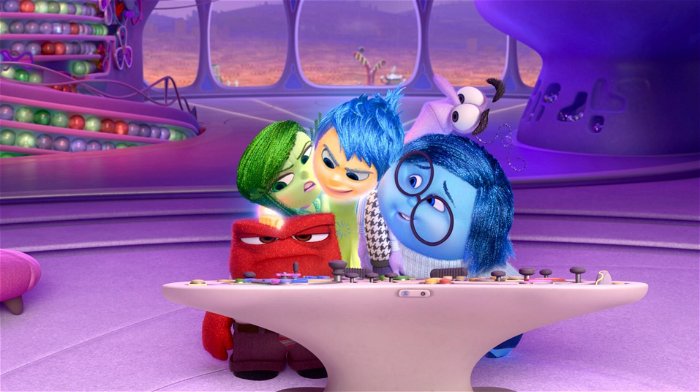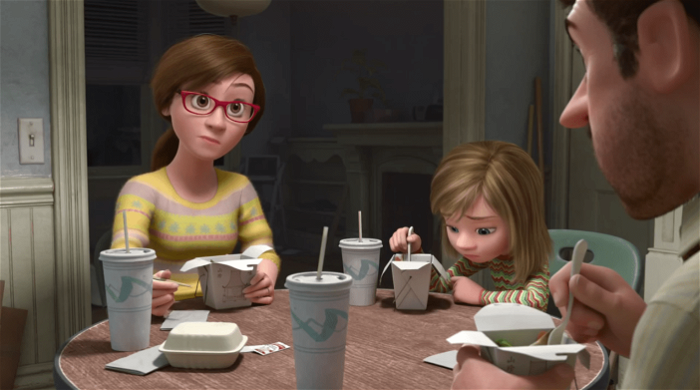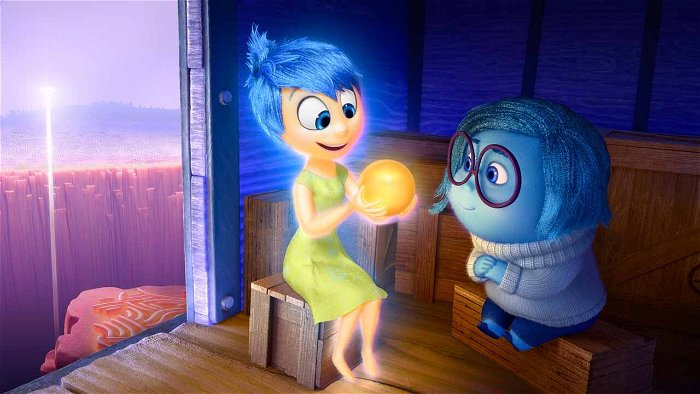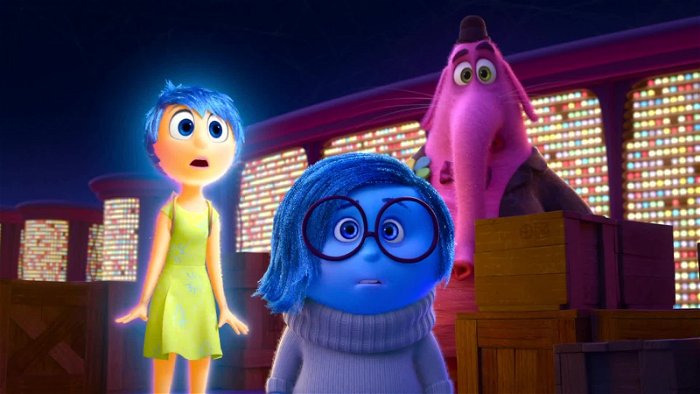They say that Disneyland is the most magical place on earth and to be fair, if you’re 7-years-old, that’s probably true. However, for adult children and artists, the actual most magical place on earth has got to be Pixar. Since John Lasseter launched the studio into the stratosphere with the first feature length CGI film Toy Story (following the patronage of no less that George Lucas and Steve Jobs for a while), Pixar has been the home of some of the most beautifully crafted, hilarious and moving movies to flicker across the screens. The fact that they are animated and theoretically for children is almost beside the point. Pixar’s legacy is so strong that I don’t even need to list off their titles. You know what they do and damn it, you love them for it.

Part of the reason for Pixar’s continued and constant success is the open and creative environment they create for their staff. Take Josh Cooley, for example. He joined Pixar as an intern almost a decade ago and gradually worked his way up through the system. Not only was Cooley tapped to co-write and lead the storyboard department for Pixar’s latest brilliant flick Inside Out, but now he’s even about to co-direct Toy Story 4 with founder John Lasseter. And just think, all you got out of your post-grad internship was additional debt! This Friday, Inside Out hits screens to undoubtedly delighted fans of all ages and Cooley will also be hosting a 6-hour masterclass in storytelling and animation as part of the Toronto Animation Arts Festival International. In anticipation of the film and the event, CGM got a chance to chat with Cooley about all things Pixar.
How did you get involved with Pixar? I gather you were initially in the story department?
Yeah, I went to art school to study 2D animation because my dream at the time was to be a 2D animator for Disney. When I was in college, one of the last courses I took was Story class, where I learned about storyboarding and the story process. I really fell in love with it. It incorporated my love of drawing with coming up with story ideas, which I didn’t realize I loved that much until then. I was able to get into Pixar as an intern in the story department shortly after that. The first movie I worked on was Cars and learned a ton through that process and eventually just worked my way up.
I get the impression that official job titles at Pixar are pretty fluid and ideas are welcome from everyone as long as they’re good. Has that been true in your experience?
Yeah, definitely. Even as an intern, I was able to suggest story ideas and gag ideas. In fact, it’s encouraged. All of the story artists working on the storyboards often get pulled into a room for gag sessions where we just throw ideas around about how to make things funnier or stronger. It’s always very much a team effort. We also screen early versions of the films while we’re working on them to other artists who are working on other projects. So, it’s very a much a group process and that always makes the movies stronger.

Is there any sequence in the movies you worked on as a story artist that you’re particularly proud of as being your work?
Sure, there are scenes here and there. We work in sequences so it’s always smaller chunks and we’ll have up to 10-12 artists working on any given sequence. One of the ones that I really enjoyed working on was the sequence in Ratatouille when Remy falls into the kitchen. Brad Bird came to a few of us and said, “Look, all the script says is that he falls into the kitchen. So just knock him around and make him go through hell.” We came up with a list of all the ways you could kill a rat in the kitchen and the boards we came up with that day are pretty much exactly what’s in the movie.
When did you first get involved with Inside Out? Were you one of the writers from the beginning?

Almost. I was working on another film, but I knew that Pete and Ronnie [Pete Docter and Ronaldo Del Carmen] were working on another film after Up!. I went to Pete when I was wrapping up the other project and told him, “I don’t know what you’re doing next, but I loved working with you and would love to be a part of whatever you’re doing.” He said, “Great, I’d love you to be the Story Supervisor.” I’d never been in charge of the storyboard artists before, so I thought that was great and was thrilled. I didn’t even know what his idea was yet, but I was on board. He told me that the movie was going to be about emotions in a little girl’s head. That’s pretty much all we had. We didn’t know which emotions we’d be using or what the mind might look like. We didn’t know anything. So, I started working with Ronnie and Pete early on in the process and ended up being on it for over four years right through to the end. So, I was there pretty early. Then, as I was supervising all the storyboard artists, Pete would come into my office and say, “I’m trying to figure out how this scene could work. What can I add?” I’d start throwing out ideas and then one day he said, “That’s great. Why don’t you write it?” I was like, “sure” and we started throwing scenes back and forth. It happened enough that eventually I just became a screenwriter on the film.
In the early stages of Inside Out, was the focus geared more towards the comedy potential of the concept or the more emotional component?
We always knew from the beginning that if we were going to tell a story about emotions, it was going to be an emotional story. So we were trying to find ideas that could become an emotional story in this girl’s life. We went down a couple of different tracks to find that. Then at the same time, we obviously knew it had to be funny. Having emotions as characters was something that we used to joke was our version of the Seven Dwarves. Then the cast we brought in was so perfect that it really brought that comedy out once we knew we were writing for them.
Yeah, all of the emotions were cast to type perfectly. How early on did you settle on those performers?
We thought about it early. We didn’t wait because we knew those actors had to come through as the emotions. So, I mean, as soon as we decided that Anger was going to be one of our emotions, Louis Black came to our minds right away. There’s no one funnier with anger. He was perfect. I think the whole cast was perfect. Joy was the most difficult character to write because when someone is that positive all the time, you kind of want to kill them. They seem insane. So making her positive without being annoying was a challenge. But once we got Amy on board, it just clicked. She knew what she could bring to it. Before she signed on, we all went to New York to pitch the movie to her and she actually helped us write for a few days, which was awesome. She could take our ideas for jokes and make them so much better because she’s a great writer in addition to being such a wonderful comedic actress.

I noticed both her and Bill Hader were credited as additional dialogue writers.
Oh yeah, Bill came out to Pixar here and there for a couple of weeks throughout the years. He’s another talented writer as well, so we were just happy to have him contributing ideas.
Is it common for Pixar voice actors to contribute on a writing level as well?
I don’t think it is, actually. We just realized that we had a really talented cast, so it would have been stupid not to take advantage of that.
How did you guys settle on what to do with the character of Bing-Bong, because as an imaginary friend, that character could be pretty much anything?

You know what? It’s funny, there weren’t really that many permutations. Bing-Bong was actually specifically based on a real imaginary friend that Pete had as a kid. So we knew he was going to be an elephant with other animal parts, but we always danced around the same general idea because he came from Pete’s life in a weird way.
Richard Kind was so perfect for that part because he’s got a knack for being almost charmingly annoying in a way that few people in the world can pull off.
(Laughs) Yeah, that was amazing. He’s been in other Pixar films as well, so he was immediately on board. I went to a couple of the recording sessions and it was incredible because the guy really is Bing-Bong. He is that character. I’ll never forget after the first line he did, he turned to us and said [in a hilariously perfect Richard Kind impression], “How was that? Was it good? Did you like it? I can do better. I can change everything. Don’t worry, I’ll change it!” My mind was blown because he just was the character.
So, I’m not sure what you can even say about Toy Story 4 at this point, but how’s it been so far and is it intimidating to be co-directing with John Lasseter at all?
I’m very honored and excited about it. I’ve actually been working one-on-one with John since I got here, so I know him well and I know that it will be great. Honestly, that’s all I’m allowed to say about that right now. Sorry!




